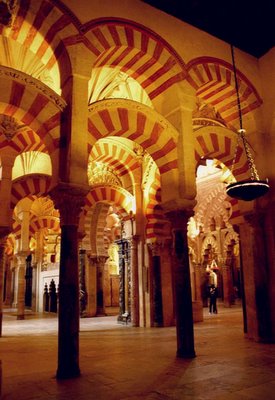
It seems to be buried in the backpages, but you may have heard about
a report on the airline industry that came out today co-authored by Dean Headley of Wichita State University. The short version: service sucks and everyone is pissed off.
More airline passengers bumped, more bags lost and fewer on-time flights. For the third year in a row, those problems grew worse for the industry, according to an annual study that rates airline quality.
"They just don't get it yet," said Headley. Who's "they" and what don't they "get?" Well, take this statement from a spokesman for the Air Transport Association: "We're going to see more delays and those delays translate to cancellations, mishandled bags and unhappy passengers," It's not a pretty picture." He doesn't expect that picture to get better soon and he blames... the weather. I think we could look for a better answer-- and solutions-- from Jonathan Tisch.
A lot of executives at my former company, Warner Bros. Records, used to stay at the
Regency Hotel on Park Avenue in NYC. Before I started working at WB, an incident at the hotel became part of Warner Bros lore. One night during a series of executive meetings at the hotel all the rooms on an entire floor were broken into and 4 of our guys were robbed. The hotel handled their complaints so poorly-- practically blaming them for the problem and telling them that the hotel was too busy to help them or to even call the police-- that the Regency went from being the hotel of choice for our company to a hotel no one trusted... or stayed at. This was long before Jonathan Tisch became CEO of Loews Hotels.
In fact, reading Tisch's new book,
Chocolates On The Pillow Aren't Enough-- Reinventing the Customer Experience, is almost like getting a response to the whole hideous incident. Something like that could never happen under his leadership. Tisch is one smart cookie and this latest book by him is a must read for anyone involved in marketing. But aside from being an author, CEO of Loews Hotels and one of the heads as the whole U.S. tourism industry (as Chairman of the Travel Business Roundtable for over a decade), he is also mixed up with government and politics. That's what I wanted to talk with him about when I got him on the phone last week. It isn't what he wanted to talk about.
Yeah, yeah, yeah, he's flattered people are pushing his name out there to be
NYC's next mayor but he just wanted to talk with me about his ideas about customer service. He's got a great reputation as an old-fashioned-- or is it futuristic-- CEO who champions corporate responsibility and believes-- as well as acts on-- the premise that
a company can do well and do good at the same time. That's a very hard line to sell to Wall Street. (He told me it's his cousin's job to talk with the Wall Street analysts, not his.)
He says tourism is 100% non-partisan and that it's part of the lifeblood of every state and every congressional district in the nation. He spends a lot of time working with government on issues critical to the tourism industry. A Democrat, in 2003 he was appointed to the Department of Commerce's U.S. Travel and Tourism Advisory Board and he was a founder of the
Discover America Partnership. I asked him if the Bush Regime is trying to politicize the Board he serves on the way they have been politicizing the Department of Justice and the General Services Adminsitration. I could almost see him rolling his eyes on the other end of the line. "No," he said.
So what did Tisch have to say about today's report about the airline industry? By now you should be able to guess yourself. "It would be wonderful if the airlines could think of themselves like other parts of the travel and tourism industry, and not just in the business of transportation. These new numbers show that as a group, they may be wining the battle of profitability, but losing the war of customer service."
I don't know about you, but when I'm on a ridiculously long line 2 hours before my plane is scheduled to take off-- and it probably won't be on time anyway-- and I'm holding my shoes and praying my belt buckle won't set off an alarm and that I'll remember to take back my cell phone and keys, I'm just hating George W. Bush even more than usual. And every foreigner I've spoken to who either comes here to visit or contemplates coming here to visit, is a lot more pissed off than I am.
OK, now we're getting into Tisch's territory. Foreign tourism is down nearly 20% since Bush, at heart a paranoid, provincial hayseed and a xenophobic nativist, took over the White House. The Republicans may have once been a business friendly party but now... well, during the Bush era our economy has lost $93 billion in revenue from global tourism (and $15 billion in taxes)-- not to mention 58 million fewer visitors and nearly 200,000 lost jobs. Last week the Department of Commerce released figures that reveal that overseas travel to the U.S. remains below pre-9/11 levels in six of the top eight overseas markets-- Mexico and Canada being the two exceptions. Travel to the U.S. in 2006 fell further in five out of the top eight overseas markets. A 2006 survey of overseas travelers conducted by the Discover America Partnership found negative perceptions of the U.S. entry process to be the greatest deterrent to visiting the country. That's not pro-Business and it's not good customer service. Tourists and businessmen from Britain, Japan, Germany, France, Italy, and Brazil are opting to go elsewhere.
Friends who stay at Loews hotels swear that service and overall product are noticably improved since Tisch took the helm. I couldn't find a dissenting view. When I asked friends in NYC what they thought of Tisch as mayor, those who knew who he is were enthusiastic. By chance while I was writing this my old boss, Seymour Stein, called me to fret about the possibility of Giuliani becoming president. I assured him it wasn't going to happen and when he was calmed down I asked him about Tisch. "He's very smart and he has a good heart. His family are equestrians and they once wanted to buy my ranch. He'd be a great mayor. That Giuliani... he was the worst..."

Tisch has been a
super generous contributor to Democrats over the years, although almost all of the donations have been to button down Establishment and conservative Democrats, from the Blue Dog PAC, Harold Ford, Joe Lieberman (a former Democrat), Evan Bayh, Ken Salazar, Rahm Emanuel... and (many) hundreds of thousands of dollars to the big Inside-the-Beltway committees like the DNC, DSCC and DCCC. I didn't find many contributions for Republicans other than to Mark Foley, and token donations to Al D'Amato (once a cost of doing business in New York) and Conrad Burns. This week Jonathan made a very cool contribution to
Blue America: a boxful of personally autographed copies of
Chocolates On The Pillow Aren't Enough. We'll be giving them away this Saturday at
firedoglake as part of a live blog session with the man who represents-- among others-- Jonathan Tisch: Congressman Jerry Nadler. Come over and join us at 11AM est. The book is great.














































